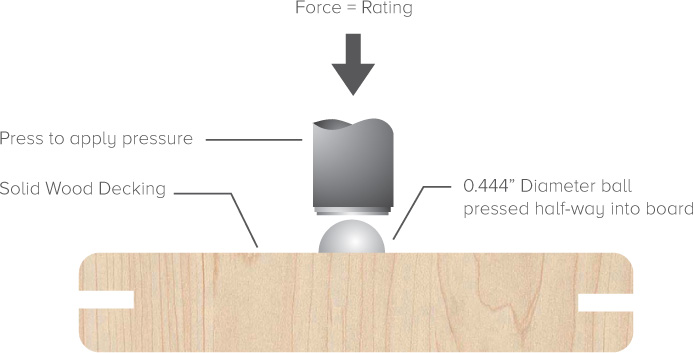We all want floors in our home that look great, but sometimes there are other factors which are just as important. If you have a busy home with pets, kids and guests then you need a floor that can stand up to the invasion of shoes and dirt. If you are preparing a property for rental you want a floor that you can install and forget about. And if you are on a budget you’ll want to know that your investment is going to last. Wood products are known for their natural beauty, but when selecting a type of wood for your next flooring project, it is important to also consider the level of durability by understanding the difference between wood types. Each type and species of wood has an individual structure that creates unique physical properties that determine how suitable they are for different projects.
For example, the hardness of woods varies widely, so certain hardwood species, like pine, are not recommended for flooring because they are not hard enough to withstand heavy wear and tear.
Hardwoods are deciduous trees that have broad leaves, produce a fruit or nut and generally go dormant in the winter. North America’s forests grow hundreds of varieties that thrive in temperate climates, including oak, ash, cherry, maple and poplar. Each species can be crafted into durable, long-lasting flooring and each offers unique markings with variation in grain pattern, texture and color.
Softwoods or conifers, meaning “cone-bearing,” have needles rather than leaves. Widely available U.S. softwood trees include cedar, fir, hemlock, pine, redwood and spruce. In a home, softwoods primarily are used for framing lumber, such as 2x4s, but not as flooring due to the softness of the wood. After a while the wood will show dents, scratches, etc. The only time is used for flooring is if a period colonial look is trying to be achieved or if price is a major factor, as pine is much cheaper than many hard woods.
Tropical Hardwoods, including mahogany, rosewood, and teak, are not native to North America. They grow in the tropical forests of the world and must be imported for domestic use. While some tropical hardwoods can be used for interior applications, including flooring, the color, grain pattern, hardness and luster of many imported woods differ from those of American hardwoods. For more information on non-native species, refer to the “Don’t be fooled” article.
Janka Rating System
When in doubt about the type of wood to select for your cabinetry, flooring, furniture or millwork project, refer to the Janka Rating System, which measures the relative hardness of woods. The hardest commercially available hardwood is hickory, and it is five times harder than aspen, one of the “soft” hardwoods. And while this example lists just some of the most popular hardwood species, there are hundreds of varieties, representing the North American hardwood population. Because hardness is an important factor, and hardness varies for each species, the Janka Scale of Hardness is an excellent tool to help identify appropriate choices.Species
Pressure To Mar
(Kiln-dried) (in pounds)
Hickory, Pecan 1,820
Hard Maple 1,450
White Oak 1,360
Beech 1,300
Red Oak 1,290
Yellow Birch 1,260
Green Ash 1,200
Black Walnut 1,010
Soft Maple 950
Cherry 950
Hackberry 880
Gum 850
Elm 830
Sycamore 770
Alder 590
Yellow Poplar 540
Cottonwood 430
Basswood 410
Aspen 350
Source: Wood Handbook: Wood as an Engineering Material, USDA, Washington, D.C.

